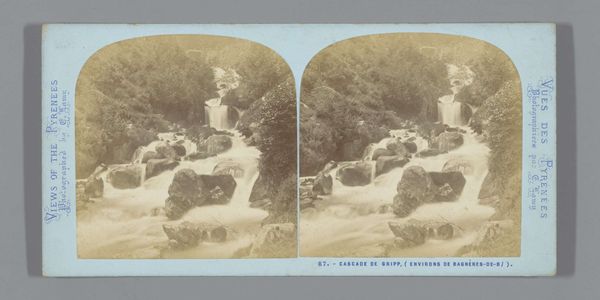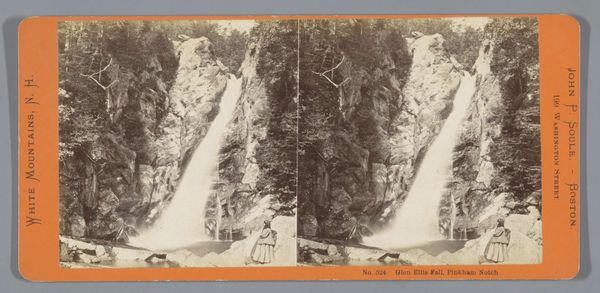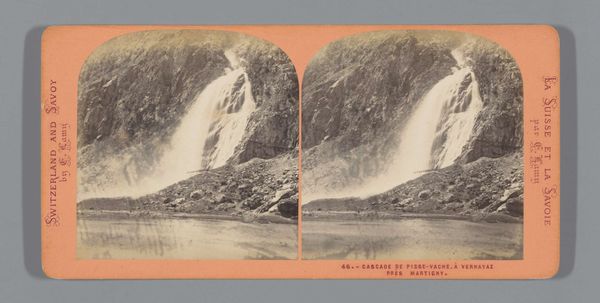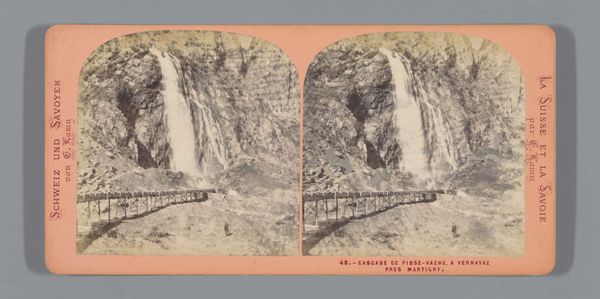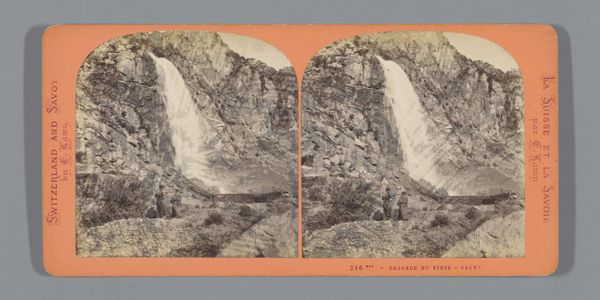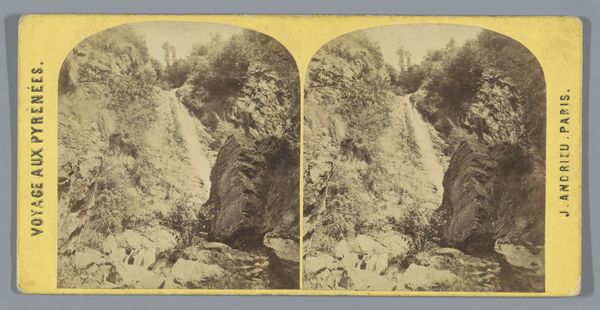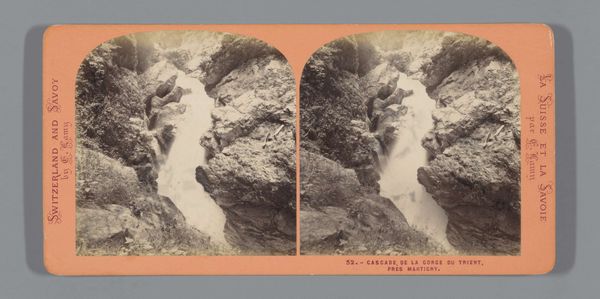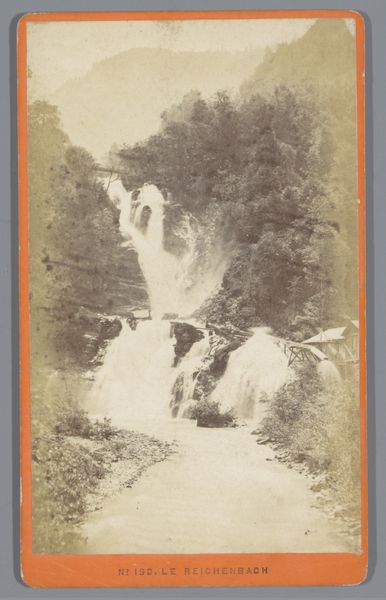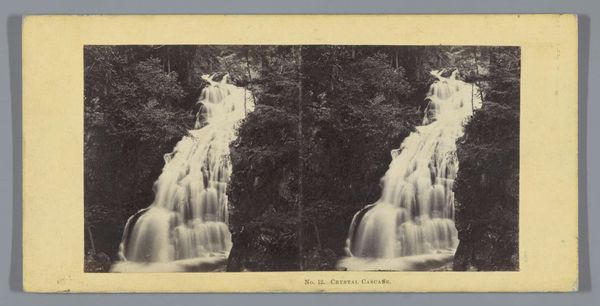
Dimensions: height 85 mm, width 170 mm
Copyright: Rijks Museum: Open Domain
Editor: We’re looking at "Bovenste deel van de Cascade de Berard," a gelatin silver print from around 1860-1880 by Ernest Eléonor Pierre Lamy. The waterfall is so powerful; the water just seems to burst out. What strikes you most about this image? Curator: What I see first is the enduring symbol of nature's raw power. The waterfall itself represents the unyielding force of the natural world, a common romantic trope but with an added layer here. Notice the built structure above, the mill; it symbolizes humanity's attempt to harness this force, to find a practical, even industrial, application for this elemental energy. Editor: It’s interesting to think of a mill as symbolic; I mainly saw it as part of the landscape. But how does that interplay change how we perceive the waterfall? Curator: It speaks to the relationship between humankind and nature in that period. The romantic ideal was about communion, but this image suggests something more complex – a desire not just to admire nature, but to dominate and utilize it. Even the choice to capture it in photography, a new technology, reinforces this impulse. It makes you consider, doesn't it, what we value: the sublime beauty or its potential function? Editor: Definitely gives me a different perspective! I was only considering the beauty of the water. It makes me realize the layers within such images, not just documenting a scene, but also revealing a specific attitude towards it. Curator: Precisely! By understanding those embedded layers of meaning, we understand more about the culture that produced the image, and the evolving symbols that bind us still.
Comments
No comments
Be the first to comment and join the conversation on the ultimate creative platform.
